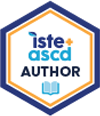
Event Information

Content/Engagement/Process-
The audience will participate in simulations, partner shares (or if virtual the chat), and choral readings. Classroom examples will engage participants through heartfelt stories and practical ideas. Humor will be woven throughout. The presentation will alternate between lessons, reading simulations, video clips, total physical response with gestures, sample games and partner or virtual chat interactions. All hands-on activities are purposeful and serve as examples for teachers to use in their own classrooms!
Time
Presentation will fit into the allotted time.
These are approximations that can be adjusted slightly to end on time!
Introduction 5 min.
Participants view a variety of student definitions of reading. They turn and talk or participate in the virtual chat to share comprehension problems their students experience when reading. The presenter outlines common problems students experience with comprehension. The objectives for the presentation will be shared.
Definition of Reciprocal Teaching 5 minutes
The presenter defines reciprocal teaching. Reciprocal teaching is a scaffolded discussion technique that includes four robust strategies good readers use including the "Fab Four"
predict, question, clarify, and summarize.
Participants view a short video (Oczkus ASCD, 2018) clip that shows the method in action in a variety of grade levels. Participants discuss their experiences with the method. Are they observers, joggers, or runners in reciprocal teaching?
Research Base/ Evidence 7 minutes
Research from the field is shared including; Palincsar and Brown, 1986 and Hattie, 2008 and others. An article by Duke, Ward, and Pearson (ILA, 2023) points to reciprocal teaching as a science of reading comprehension technique. Lori shows results from her project schools around the United States and internationally using photos and video clips. Participants learn how student knowledge base is enhanced with reciprocal teaching.
Presentation includes a variety of "go to" lessons that participants can use immediately for results.
Mini-Lesson Menu 5 minutes
Throughout the presentation the participants will log mini-lessons for each of the four strategies on a graphic organizer.
Scaffolds- 5 minutes
Hands-on scaffolds make learning engaging and include posters, bookmarks, characters/puppets, graphic organizers, dice games, gestures, and songs.
-Read Alouds 7 minutes
Participants engage in a read aloud and make a foldable to record their discussion responses. Lori will share ways to include informal assessments.
-Close Reading 10 minutes
Participants engage in marking texts in a simulation of an informational text close read. Other classroom examples are also shown. Fab four close reading with poetry is included as a powerful way to develop fluency and vocabulary.
-Small Group Instruction 7 minutes
Teacher -led small groups are a very effective way to deliver reciprocal teaching. Short 2-3 minute video examples will be shared. Participants will discuss a small group template for any text. Ways to engage students will be shared as well.
-Book Clubs 5 minutes
A variety of scaffolded ways to coach students to participate in teams includes - table teams or book clubs where students take on the roles of predictor, clarifier, questioner, and summarizer. Short video clips will demonstrate the various ways to run groups.
Foundations for Success 4 minutes
Proven foundations for success and ways to increase student learning will be shared. Foundations include coaching lessons so the following are developed in every lesson- teacher think alouds, cooperative learning, scaffolding, and metacognition.
Closing 3-4 minutes
Take aways will be summarized. Motivating quotes from students and testimonials from teachers will be shared. Participants identify and share the ideas they wish to try first.
Reciprocal Teaching at Work by Lori Oczkus. ASCD, 2018
Reciprocal Teaching Research-John Hattie (2008)
Reciprocal teaching was introduced in reading journals in the 1980s, (Palincsar and Brown, 1986) this research-proven technique for teaching multiple comprehension strategies and is backed by many studies. John Hattie (2008) in Visible Learning cites over 800 meta- analyses in 15 years of research concluding that reciprocal teaching is one of the TOP strategies we can use to impact student achievement.
The effect size is .74.
Students who engage in reciprocal teaching not only improve in their reading level, but also retain more of the material covered in the text. (Reutzel, Smith &Fawson, 2005). Research also points to using cooperative learning or collaborative learning with multiple strategies and reciprocal is a recommended practice that improves students’ reading comprehension. (National Institute of Child Health and Human Development (NICHD), 2000; Pearson & Duke, 2002: Pressley, 2002; Reutzel et al., 2005
•Galloway (2003) 22 studies based on 677 students same effect size .74!
•Rosenshine and Meister (1994) reviewed 16 studies of reciprocal teaching and concluded reciprocal teaching is a technique that improves reading comprehension.
•This powerful teaching technique is especially effective when incorporated as part of an intervention for struggling readers (Cooper et al., 2000) and when used with low-performing students in urban settings (Carter, 1997).
Reciprocal teaching has proved to yield positive and consistent results with primary- and upper grade elementary students who are taught in large-group, teacher-led settings and in peer groups (Cooper et al., 2000; Palincsar & Brown, 1984, 1986; Palincsar & Klenk, 1991, 1992).
The Science of Reading Comprehension (Duke, Ward, and Pearson, 2023)
Blog Post https://www.literacyworldwide.org/blog/literacy-now/2020/04/16/reading-rescue-preventing-the-covid-19-slide-with-lessons-for-comprehension-and-fluency-at-home
Webinar by Lori Oczkus on Reciprocal Teaching
https://www.ascd.org/webinars/reading-rescue-with-the-fab-four-webinar

